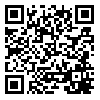Volume 12, Issue 2 (6-2022)
J Health Saf Work 2022, 12(2): 403-417 |
Back to browse issues page
Download citation:
BibTeX | RIS | EndNote | Medlars | ProCite | Reference Manager | RefWorks
Send citation to:



BibTeX | RIS | EndNote | Medlars | ProCite | Reference Manager | RefWorks
Send citation to:
Hokmabadi R, Mahdinia M, Rezaei Hachesu V, Karimi A. Investigating relationship between sleep disorders and work ability among workers in construction workshops. J Health Saf Work 2022; 12 (2) :403-417
URL: http://jhsw.tums.ac.ir/article-1-6691-en.html
URL: http://jhsw.tums.ac.ir/article-1-6691-en.html
1- Department of Occupational Health, School of Public Health, Tehran University of Medical Sciences, Tehran, Iran | Department of Occupational Health Engineering, School of Public Health, North Khorasan University of Medical Sciences, Bojnurd, Iran
2- Department of Occupational Health, School of Public Health, Qom University of Medical Sciences, Qom, Iran
3- Department of Occupational Health, School of Public Health, Tehran University of Medical Sciences, Tehran, Iran
4- Department of Occupational Health, School of Public Health, Tehran University of Medical Sciences, Tehran, Iran ,a_karimi@sina.tums.ac.ir
2- Department of Occupational Health, School of Public Health, Qom University of Medical Sciences, Qom, Iran
3- Department of Occupational Health, School of Public Health, Tehran University of Medical Sciences, Tehran, Iran
4- Department of Occupational Health, School of Public Health, Tehran University of Medical Sciences, Tehran, Iran ,
Abstract: (1803 Views)
Introduction: Sleep is one of the important physiologic needs in daily life cycle, and a part of quality of life. Sleep disorders are considered as one of the most common health problems in work communities that can affect physical, mental performance and ability to work. Therefore, this study aimed at investigating the relationship between sleep disorders and work ability in construction workers.
Material and Methods: This study is descriptive-analytical and cross-sectional. Samples of 220 people were selected by random sampling method from construction workers and personnel. Data collection tools in this study included sleep quality questionnaire, insomnia severity questionnaire and work ability questionnaire. Data were analyzed using SPSS software (version 19) and, considering the objectives, descriptive statistics and analytical tests including paired t-test, Pearson’s correlation, Kruskal-Wallis, multiple linear regression and logistic regression were used.
Results: Average age, body mass index, working hours and work experience were calculated as 34.2 ± 8.5 years old, 55.58 ± 2.78, 10.5 ± 1.25 hours and 12.7 ± 6.5 years, respectively. The mean indices of insomnia severity, Petersburg quality of sleep index and work ability were 6.6 ± 5.35, 4.95 ± 2.43 and 42.5 ± 5.13, respectively. The relationship between the work ability with sleep disorders was statistically significant. Variables of marital status, types of employment and smoking, independent of the variables of insomnia severity and sleep quality, significantly affected the work ability index, so that the R2 of these variables were 0.246 and 0.242 of the changes in work ability index, respectively.
Conclusion: Any disturbance in sleep and resting can cause poor sleep quality. As a result, it severely reduces the ability of employees to work. Therefore, it is suggested that, in order to increase the index of work ability and, thus, the efficiency of an organization, special attention be paid to sleep-resting programs of employees.
Material and Methods: This study is descriptive-analytical and cross-sectional. Samples of 220 people were selected by random sampling method from construction workers and personnel. Data collection tools in this study included sleep quality questionnaire, insomnia severity questionnaire and work ability questionnaire. Data were analyzed using SPSS software (version 19) and, considering the objectives, descriptive statistics and analytical tests including paired t-test, Pearson’s correlation, Kruskal-Wallis, multiple linear regression and logistic regression were used.
Results: Average age, body mass index, working hours and work experience were calculated as 34.2 ± 8.5 years old, 55.58 ± 2.78, 10.5 ± 1.25 hours and 12.7 ± 6.5 years, respectively. The mean indices of insomnia severity, Petersburg quality of sleep index and work ability were 6.6 ± 5.35, 4.95 ± 2.43 and 42.5 ± 5.13, respectively. The relationship between the work ability with sleep disorders was statistically significant. Variables of marital status, types of employment and smoking, independent of the variables of insomnia severity and sleep quality, significantly affected the work ability index, so that the R2 of these variables were 0.246 and 0.242 of the changes in work ability index, respectively.
Conclusion: Any disturbance in sleep and resting can cause poor sleep quality. As a result, it severely reduces the ability of employees to work. Therefore, it is suggested that, in order to increase the index of work ability and, thus, the efficiency of an organization, special attention be paid to sleep-resting programs of employees.
Type of Study: Research |
Received: 2022/06/26 | Accepted: 2022/06/22 | Published: 2022/06/22
Received: 2022/06/26 | Accepted: 2022/06/22 | Published: 2022/06/22
Send email to the article author
| Rights and permissions | |
 |
This work is licensed under a Creative Commons Attribution-NonCommercial 4.0 International License. |






